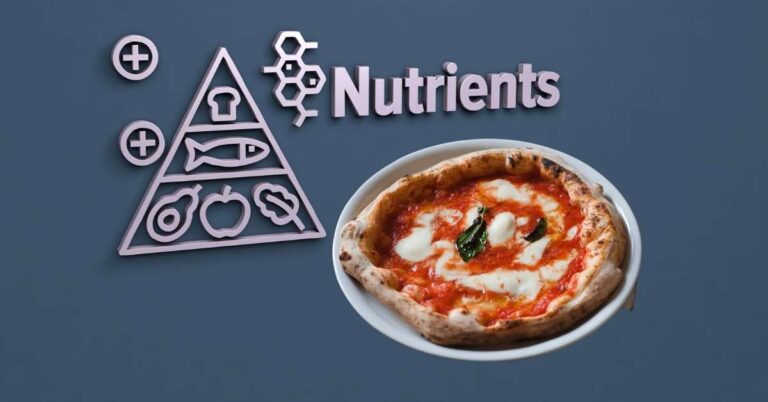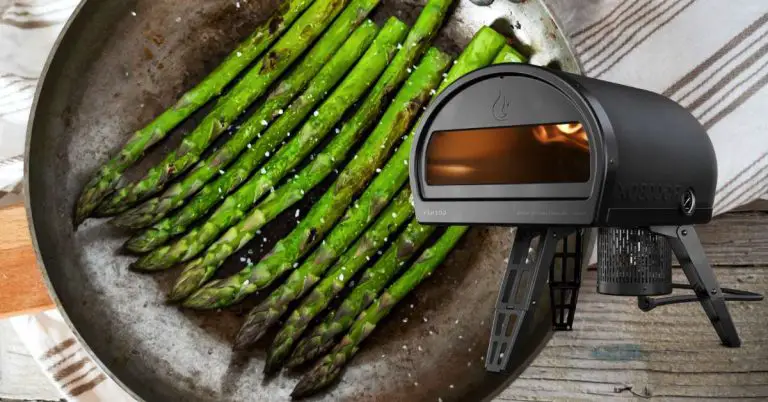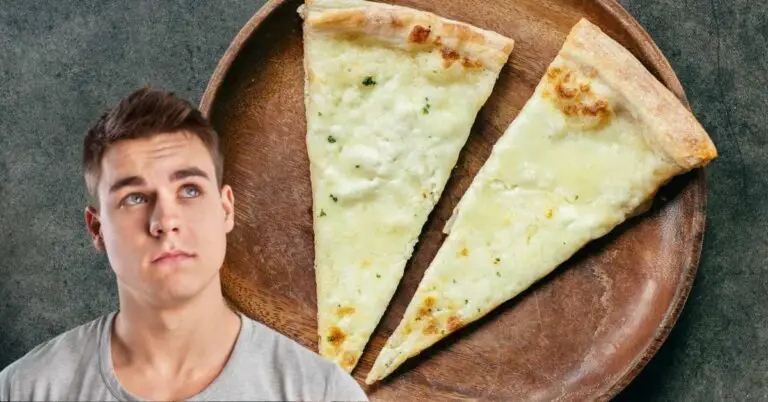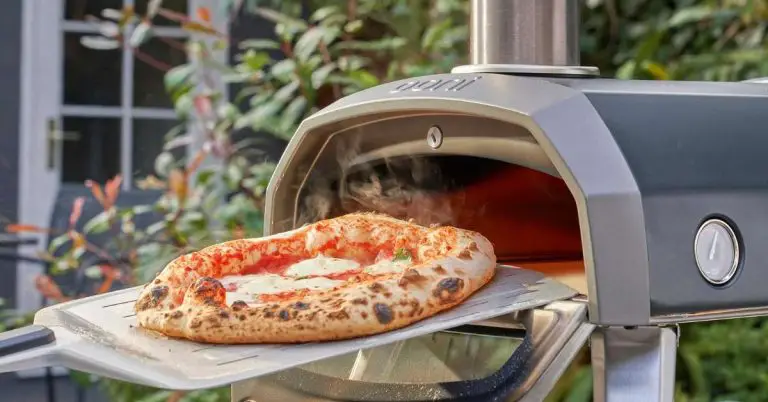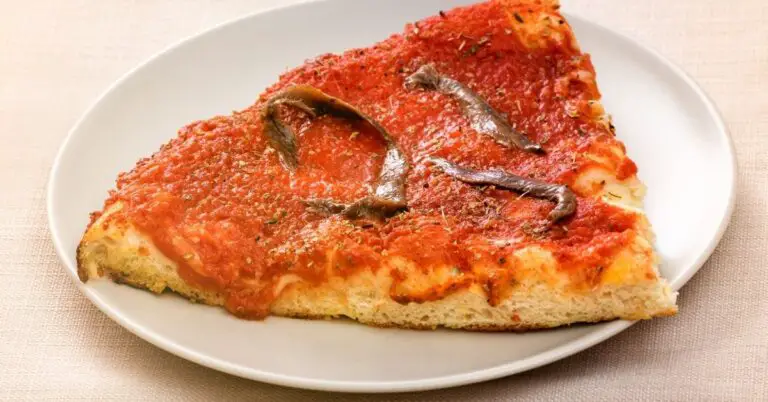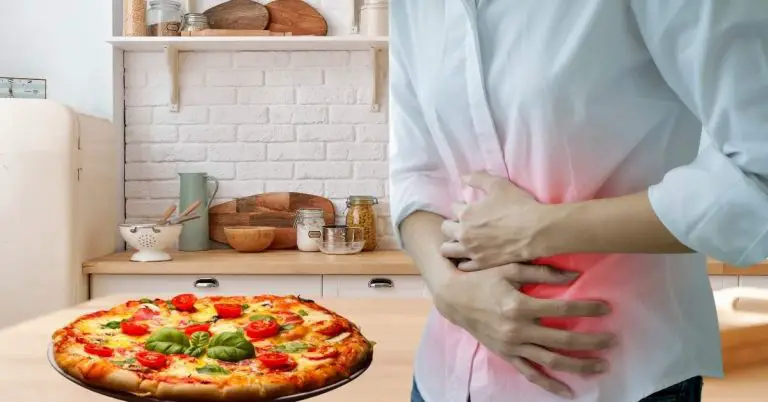Domino’s Pizza Crust Types Explained – From Brooklyn Style to Gluten Free
As a self-proclaimed “pizza expert”, I’ve had the opportunity to try some of the best pizza in the world—from New York City to Naples, and beyond. That said, I’m no pizza snob. I don’t mind eating fast-food pizza, in fact sometimes I actually enjoy it. Pizza Hut’s personal pan pepperoni pizza has always been a bit of a guilty pleasure of mine.
But Domino’s (arguably the biggest pizza chain in the world) has always been a relative mystery to me. What’s the difference between Handmade Pan vs Hand Tossed? Maybe it’s the over-saturation of their marketing throughout the decades (remember the Noid?), or maybe it’s the fact that they don’t typically have sit-down locations in the US. Whatever the case, for one reason or another, I’ve always just sort of tuned Domino’s out of my pizza consciousness.
So here’s the question—in an age of wood-fired, gourmet pizza and Neapolitan cooking, has Domino’s upped their game, or are they still offering the same sad crust I remember from the 1980s? What kinds of Domino’s Pizza Crust Types are even available? I guess I’ll just have to do a bit of research, order a few pizzas, and find out for myself.
In Brief: As of 2023, Domino’s offers 5 different types of pizza crust in the US: Handmade Pan, Hand Tossed, Crunchy Thin, Brooklyn Style, and Gluten Free. The “Hand Tossed” pizza is probably the closest thing to a “regular” pizza crust that Domino’s offers with a thin to medium thickness. The Handmade Pan pizza has a thick crust similar to Pizza Hut, while the Crunchy Thin crust is designed to emulate Midwestern USA “party style” pizza cut into square slices. The Brooklyn style crust is somewhere in the middle—the base crust is quite thin and chewy while the outer edge is slightly raised. The Gluten Free crust is actually pretty good for a gluten free crust, if a little dry.
| Crust Type | Quick | Price/square inch | Price | Description |
|---|---|---|---|---|
| Handmade Pan | Thick crust | $1.12 | $13.49 (12”) | Dough is pressed into a pan to create a thick crust, similar to Pizza Hut. Edge to edge toppings, crispy exterior. |
| Hand Tossed | Medium crust | $1.07 | $14.99 (14”) | Dough is stretched to size by hand and has a garlic-oil seasoning blend brushed into the crust. Closest thing to a “regular” or “original” Domino’s crust. |
| Crunchy Thin | Very thin crust | $1.07 | $14.99 (14”) | Very thin crust with toppings spread edge to edge. Crunchy underside, usually cut into square “party style” slices. |
| Brooklyn Style | Thin base, raised edges | $1.12 | $17.99 (16”) | Thin hand stretched crust with puffy edges, cut into six large triangles, meant to be folded and eaten. In my opinion, Brooklyn Style is the best Domino’s crust available. |
| Gluten Free | Thin base, thin edges | $1.20 | $11.99 (10”) | A thin, crispy crust that’s blander than other the styles, but still pretty good for a gluten free pizza. Most “expensive” pizza for its size. |
Just for interest’s sake, I calculated the price of each pizza (not including tips!) per square inch based on the largest pizza size offered for each crust style. Not surprisingly, the price is very standardized between $1.07 – $1.20, with the Handmade Pan, Brooklyn Style, and Gluten-Free being the most expensive, and the Hand Tossed and Crunchy Thin being the least expensive.
If there’s any takeaway from this pricing it’s that there is no Domino’s pizza style that is a significant value over any other, which is good to know.
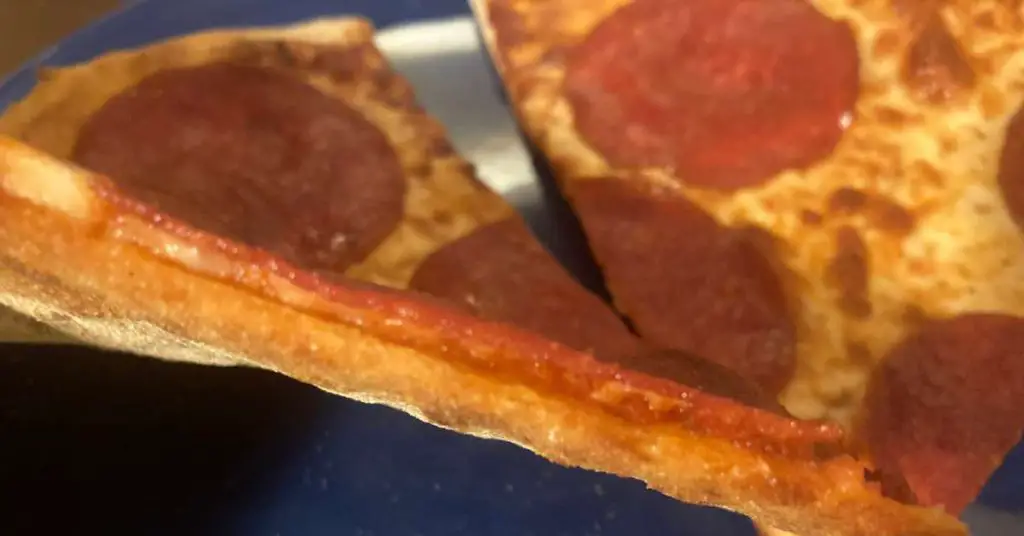
Domino’s Pizza Crust Types Pictures
Seeing is believing, and I know many of you have come here looking to see photos of the different types of pizza crust available at Domino’s. Look no further.
I’ve made a point to avoid marketing photos and only include pictures of the actual pizza taken by me or by other real reviewers online. This should help give you an idea of what’s going to turn up at your door when you make the order.
Domino’s Hand Tossed Thin Crust Photo
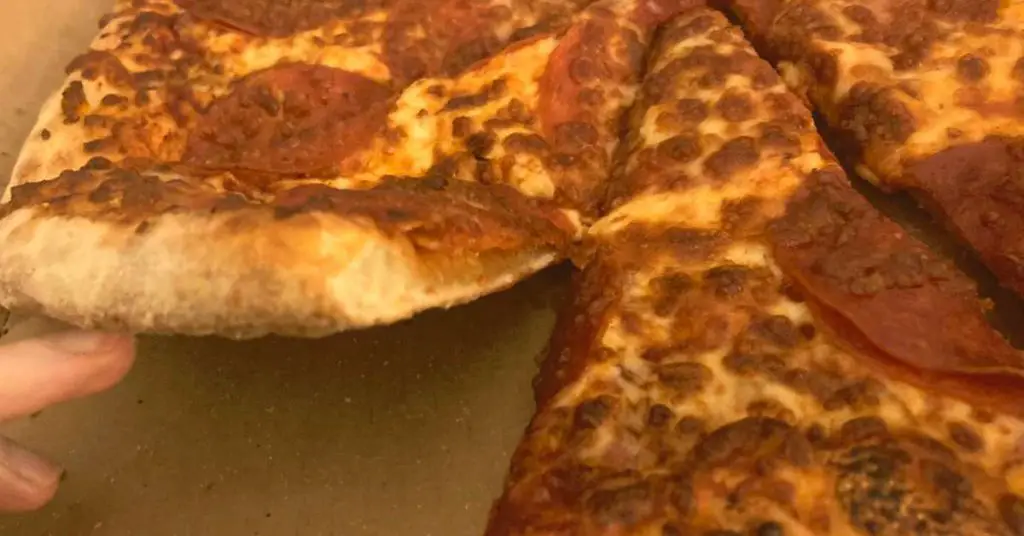
Domino’s Handmade Pan Crust Photo
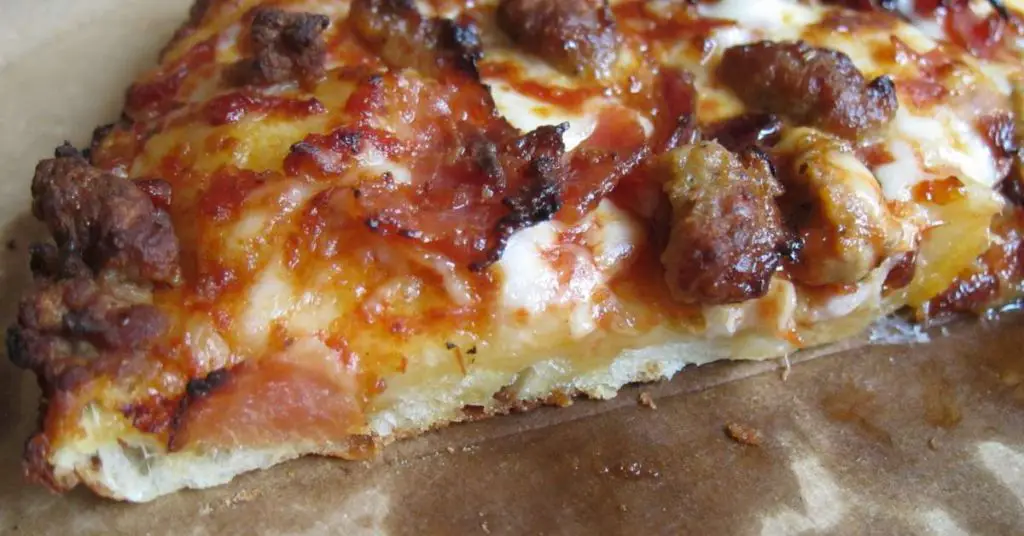
Domino’s Crunchy Thin Crust Photo
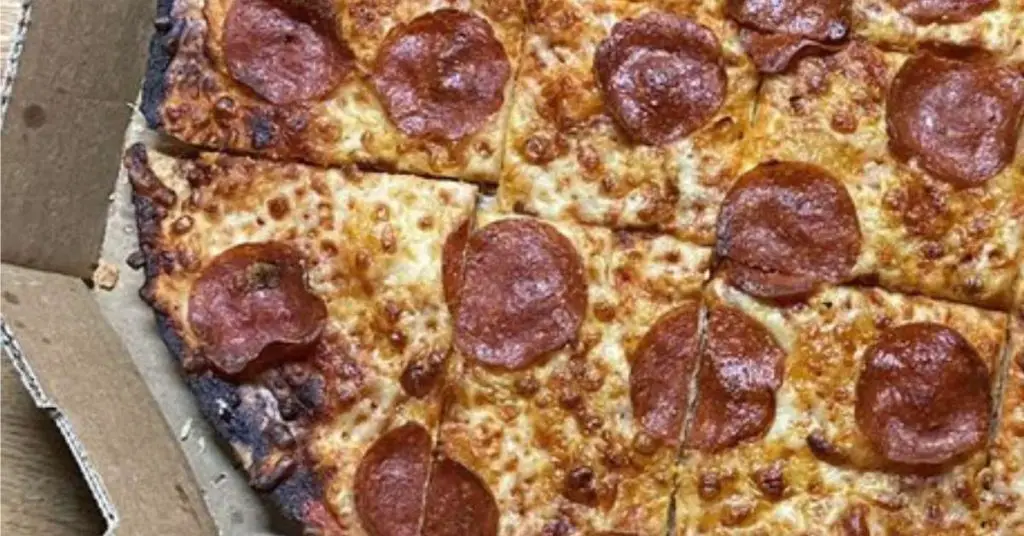
Domino’s Brooklyn Style Crust Photo
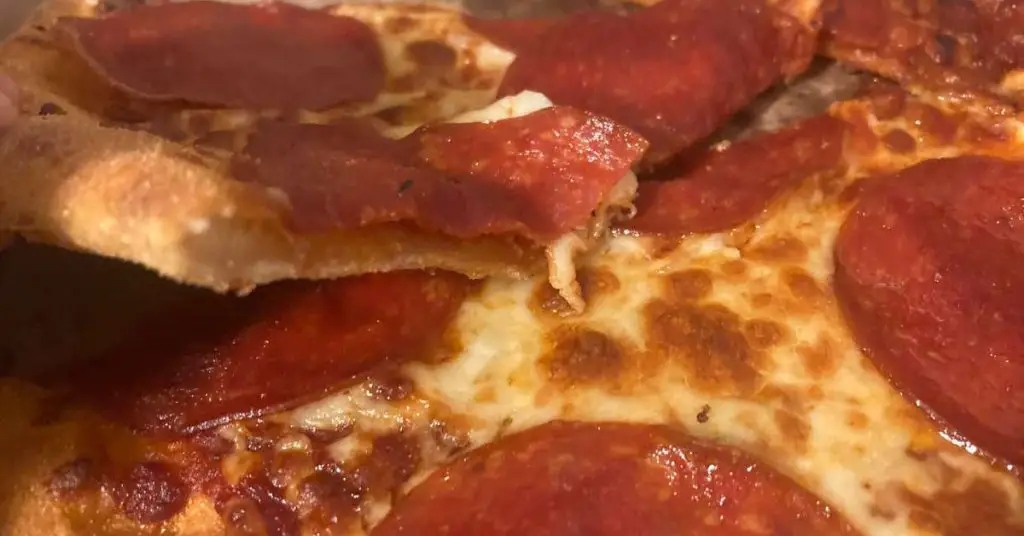
Domino’s Gluten Free Crust Photo
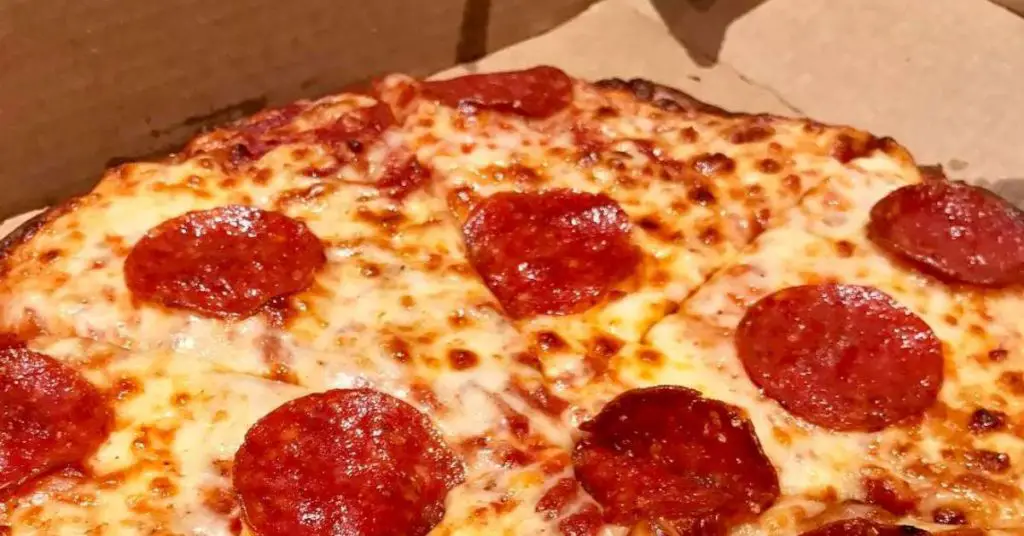
Why Pizza Crust Matters
When people think of pizza, their mind often goes straight to the toppings—“do I want pepperoni pizza, or sausage pizza”, they might ask themselves. But the real defining characteristic of any pizza style isn’t the toppings, it’s the crust.
The most famous pizza in the world, pizza Napoletana, is renowned for its white, red, and green toppings—the colors of the Italian flag. But honestly, this is just incidental. The real defining quality that sets Neapolitan pizza apart from the rest is its signature delicate crust that’s fermented for 24-48 hours then carefully stretched to form a delicate yet crispy crust. This is a skill that pizzaioli (pizza makers) around the world spend years mastering before getting it right.
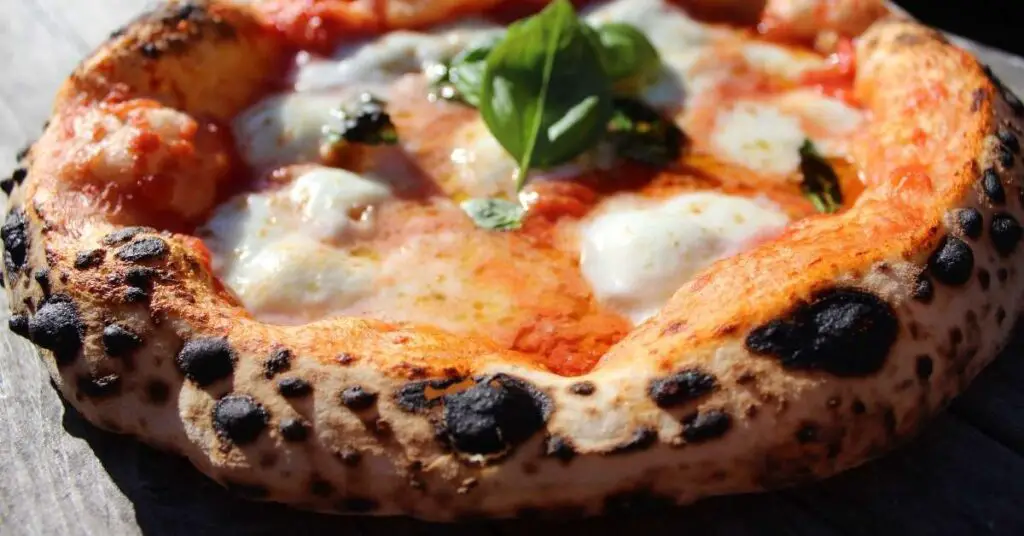
The crust matters because it’s literally the foundation of any pizza, and its flavor and texture will dictate how good or bad it ultimately is. Poor quality toppings on a high-quality crust is doable, but even excellent quality toppings on a low quality crust is (in my opinion) inedible.
But good crust doesn’t only matter when it comes to gourmet, wood-fired pizza, it makes a difference for big chain pizza as well. In fact, I would argue that the quality of the crust is actually more important when it comes to chain pizza because of the generally poor quality of the ingredients and toppings.
Why Chain Pizza Crust is Different – Dough Relaxers, Enzymes, and Conditioners
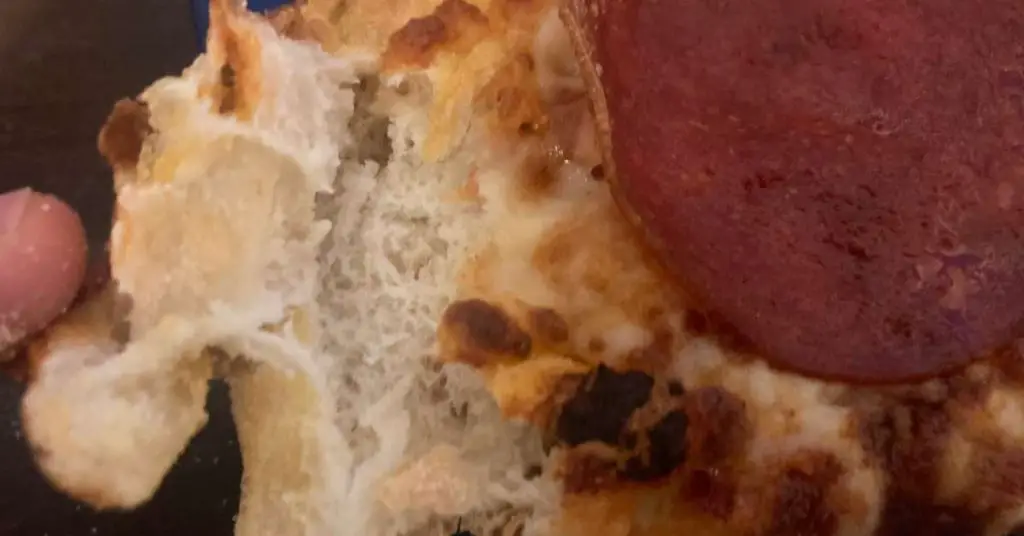
If you’ve ever made pizza at home and wondered why the crust tastes so different from the big chain pizzerias, there’s a reason for that.
Traditional pizza crust contains water, flour, yeast, and salt, as well as sometimes honey and olive oil. Big chain pizzeria crust, on the other hand, has a much longer ingredients list. Domino’s Hand Tossed pizza crust contains (additionally) Whey, Maltodextrin, Dextrose, Dough Conditioners (Sodium Stearoyl Lactylate, Enzyme with Wheat Starch, Ascorbic Acid, and L-Cysteine Monohydrochloride).
Most important on that list is dough conditioner—this changes both the consistency of the dough and the texture of the crust in a few ways. Dough conditioner is an umbrella term for various kinds of enzymes and acids that alter the gluten and speed up the fermentation process. Commercial pizzerias often use these conditioners to make it easier to stretch the dough, and to speed up the time between batches.
These conditioners (and lots of sugar and oil) are a big part of what gives big chain pizza its soft, spongy crust, compared to the crusty and chewy crust of a traditional pizza.
The benefit of a chain style crust is that it remains moist and soft even when it’s been fully cooked and charred. The downside, on the other hand, is that it will never have the complex flavor profile and refined texture of a premium baked good—the whole reason pizza became so popular in the first place.
But at the end of the day, it’s important to note that the business model of a place like Domino’s or Pizza Hut simply wouldn’t be possible using traditional baking techniques. Chain pizzerias bake hundreds of pizzas per day, every day, while a pizza maker at a traditional pizzeria can only make a few pizzas at a time. Chain pizza is also much less expensive than traditional pizza thanks to cheaper ingredients and massive supply chain networks.
What Kinds of Crust Does Domino’s Have: Domino’s Pizza Crust Types Explained
Unlike the old days when Domino’s only carried one type of crust, there are actually a few to choose from now. In the US, Domino’s offers five types of crust: Handmade Pan, Hand Tossed, Crunchy Thin, Brooklyn Style, and Gluten Free crusts.
While all five types of crust share a lot of similarities, there are some important differences between them that will appeal to different tastes. Those who like thin crust pizza will likely be drawn to the Crunchy Thin and Brooklyn Style, while those who like the traditional Domino’s style will prefer the Hand Tossed and Handmade Pan crusts. The Gluten Free crust will, of course, appeal to those with a gluten intolerance.
Domino’s Hand Tossed Crust – Not Too Thick, Not Too Thin
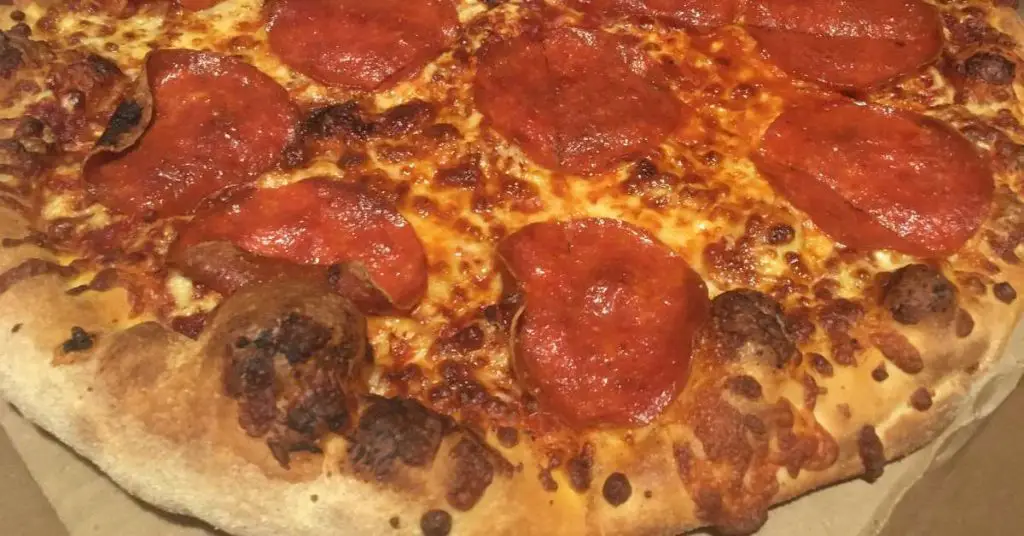
If you call up Domino’s and order a pizza without specifying a crust, there’s a good chance they’ll make it using a Hand Tossed crust. The Hand Tossed is probably the closest thing to the original Domino’s style for those old enough to remember their pizza from the 1980s and 1990s. Not necessarily in terms of ingredients or taste (those have changed), but rather in terms of texture and shape.
The Hand Tossed crust at Domino’s is basically a standard American style pizza crust—a medium thickness base with a slightly puffy outer edge. The underside of the crust is cooked until it’s darkened and the cornmeal adds some texture, but overall the Hand Tossed crust is very soft and spongy due to the dough conditioners added to the recipe.
The Hand Tossed crust is thicker than the Crunchy Thin and Brooklyn Style, but thinner than the Handmade Pan crust. It’s called “hand tossed” because the dough is stretched by hand rather than pressed into a pan or rolled flat with a machine. This will also result in each pizza being slightly different from the last one, which can be a good or bad thing depending on the skill of who is hand stretching the dough.
Bottom Line: If you’re in the mood for Domino’s but aren’t quite sure which crust to get, you probably want a Hand Tossed pizza. Hand Tossed is what I would consider a “regular” Domino’s pizza crust.
Domino’s Handmade Pan Crust – Thick Crust, Crispy Edges

At first glance, Domino’s Handmade Pan crust looks very similar to the Hand Tossed crust, but upon closer examination, I can see there are some significant differences.
While the Hand Tossed pizza is thin in the middle and thicker around the sides, the Handmade Pan pizza has an equally thick base as it does outer crust. The toppings on the Handmade Pan pizza go from edge to edge as well, which is common for pizza prepared in a pan.
The biggest difference between the Handmade Pan and Hand Tossed crust is the texture. Pizza cooked in a pan (especially an oiled one) will have a noticeably crispier crust than one cooked out in the open. This is certainly the case here because the edges of the Handmade Pan crust are charred along edges where the dough touches the pan, and there’s even some slight caramelization of the cheese and toppings like you might see on a Detroit style pizza (which is also made in a pan).
Handmade Pan dough is shaped by pressing it into the pan and then allowing is to rise (or proof) for a certain amount of time before baking. This helps give the crust its uniform thickness and puffy texture.
I have to think that the Handmade Pan crust is Domino’s answer to Pizza Hut, which famously cooks their standard crust pizza in a pan. There are just certain qualities that all pan pizza shares, like an airy crust and crispy edges, and Domino’s is checking those boxes here to cover that market.
Bottom Line: If you like thick crust pizza, or are even just a fan of Pizza Hut, you’ll like Domino’s Handmade Pan crust. It’s soft and airy with a crispy exterior from contact with the pan, as well as edge to edge toppings and some light caramelization.
Domino’s Crunchy Thin Crust – Very Thin, Very Crunchy
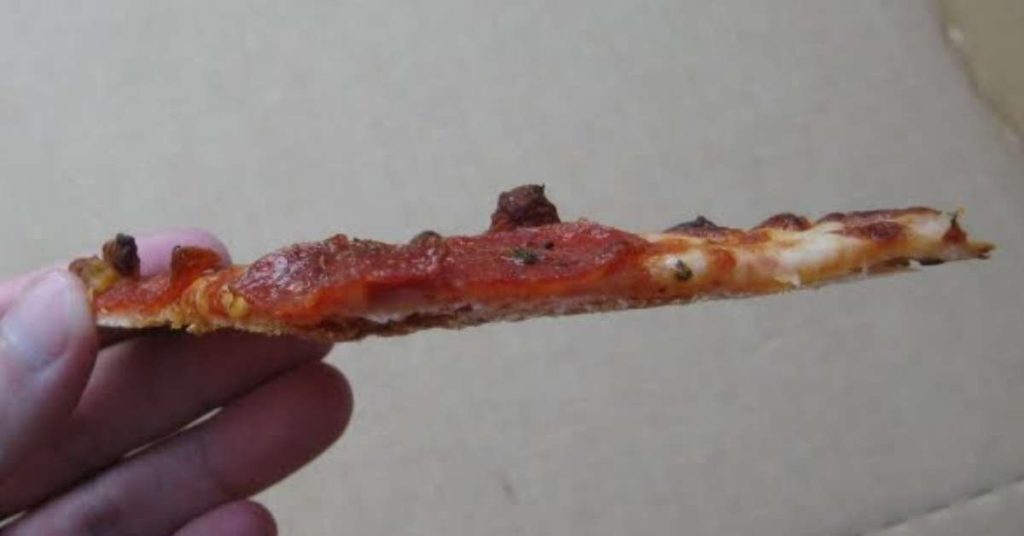
The Crunchy Thin style crust at Domino’s is—as its name suggests—very thin and very crunchy. I was also given the choice between traditional slices and square cut.
Anyone familiar with Chicago’s “party style” pizza will immediately see this is what Domino’s is going for here. The paper thin crust, the edge to edge toppings, the square cut slices, and the cracker-like base are all reminiscent of a pizza style popular in cities like Chicago and all across the American Midwest.
In fact, many Chicagoans will tell you that this is the style of pizza most popular among locals, while the deep dish, pie-like “Chicago style” pizza is for tourists.
While that last assertion is likely an exaggeration, it’s fair to say that Domino’s knows its audience and this is their attempt to give Midwesterners something they’re familiar with. Domino’s did originate in the Midwest, after all, so I guess it’s appropriate.
That said, while I love thin crust pizza, I found the crust too cracker-like and rigid to really be enjoyable for this particular pizza. It lacked any of the airy softness brought on by the dough conditioners and really just served as a platform to deliver toppings and cheese—which might be a good thing if that’s what you’re looking for.
Bottom Line: If you’re not a big fan of pizza crust, or love Midwestern “party style” pizza, you’ll probably like Domino’s Crunchy Thin crust pizza. By fast-food standards, the Crunchy Thin crust is surprisingly light, and it’s why this crust has few calories per slice than any other at Domino’s. Crunchy Thin crust style could be a good option for those on a diet (who, for some reason, have no choice but to eat at Domino’s).
Domino’s Gluten Free Crust – Not Bad

If you’ve been a reader of this website for any amount of time, you’ll know that I put a lot of focus on gluten and gluten development in pizza dough. This is because gluten is (in my opinion) literally the most important aspect of any pizza—it makes the difference between one pizza style and another, as well as a good pizza from a bad one.
For this reason, I can’t possibly judge a pizza made without gluten by the same standard as a traditional one. Gluten development is, after all, the thing that makes the difference between a thin crust pizza and a tortilla, or a thick crust pizza and a birthday cake.
That said, Domino’s Gluten Free pizza crust is surprisingly good. To be honest, it’s not massively different from other thin crust styles Domino’s offers, aside from being stiffer and drier with a blander taste. I think the Gluten Free crust benefits from the fact that Domino’s pizza crusts have poor gluten development anyways, so taking it away entirely doesn’t make a huge difference.
I’m not on a gluten free diet, so I probably wouldn’t order it again, but I’d recommend it to anyone who is. It’s a good compromise if you’re looking for a thin crust pizza and also happen to be gluten intolerant.
Bottom Line: The Gluten Free pizza crust from Domino’s isn’t a bad option for anyone with a gluten intolerance in the mood for a small pizza. In fact, as far as gluten free pizza goes, it’s actually quite good. That said, if you’re not gluten intolerant, I would stick with the Hand Tossed or Brooklyn style crust for a better experience.
Domino’s Brooklyn Style Crust – Just Like The “Old Neighborhood”?

In the fast changing world of pizza, people are starting to appreciate and demand “authentic” styles of pizza more and more. Whether it’s Neapolitan style pizza from Naples, or pizzeria style pizza from New York, people now expect more than just an average slice, even from a place like Domino’s.
Domino’s answer to this call comes in the form of their (relatively) new “Brooklyn” style pizza crust. This crust has a thin base with slightly raised, puffy edges, and comes standard with 6 slices instead of 8, giving each slice a wide, easily folded base—somewhat similar to what you might find at an average NYC pizza place.
Being honest, this was the crust style that inspired me to give Domino’s another try after all these years. As a New Yorker myself, I had to see what this Midwestern mega chain was serving the world with the word “Brooklyn” in the name.
So, was it just like eating a hot New York slice from one of the best Brooklyn pizzerias? Of course not, but it’s wasn’t entirely bad either. Compared to the other styles of Domino’s crust I tried, it was actually pretty good. Relatively speaking, of course. The base of the crust was thinner and chewier than the Hand Tossed, but with a better texture than the Crunchy Thin.
The biggest difference between Domino’s Brooklyn Style crust and an actual slice of pizza from Brooklyn is (ironically) the crust. Real New York style pizza crust should be airy and chewy, while this crust had the same soft, spongy texture as the Hand Tossed crust with only a little more chew.
In fact, aside from having a slightly thinner base and no garlic oil, there really isn’t a massive difference between Brooklyn style and Hand Tossed.
Bottom Line: If you like a relatively thin crust pizza, you’ll probably enjoy Domino’s Brooklyn style pizza crust. It has a better texture than the Crunchy Thin, and isn’t quite as thick as the Hand Tossed. Brooklyn Style is easily my favorite Domino’s pizza crust because it has a slightly chewier texture than the other options. That said, if it didn’t have the word “Brooklyn” in the name, I would never have guessed any connection to New York style pizza other than having a thin crust.
Highlights:
- No matter Domino’s pizza crust types you choose, remember, it’s still a Domino’s chain pizza, so keep your expectations in check.
- My personal favorite is the Brooklyn Style crust, because it’s thinner and chewier than the other options.
- The Hand Tossed crust is the closest thing you’ll find to a “regular” Domino’s crust that’s similar to the “original” from years ago.
- If you like thick crust pizza, or are a fan of Pizza Hut, you’ll prefer the Handmade Pan crust which is thick all around with slightly crispy edges.
- If you’re looking for a super thin crust and square slices like you find in the Midwest, the Crunchy Thin style is ideal for you.
- The Gluten Free pizza is actually pretty good compared to similar gluten free crusts. It’s basically just a different take on a thin crust pizza.
Related Posts:
- How Many Calories are REALLY in a Slice of Pizza?
- The History of Pizza in India (covers Domino’s)
- How Was Pizza Invented?
- What is Pizza? A Comprehensive Guide
- How Does Pizza Dough Rise? The Yeast – Gluten Connection
- Poolish Pizza Dough Recipe (Perfect Crust Super Easy)
- Best Temperature For Homemade Pizza In a Home Oven
Related Questions:
Which is the best pizza crust from Domino’s?
If you like a thick crust pizza, get the Handmade Pan for a fluffy crust and crispy edges. But if you like thin crust, I recommend skipping the Crunchy Thin and Hand Tossed, and getting the Brooklyn Style crust instead.
How many calories in a slice of Domino’s pizza?
On average, a large Domino’s pizza has about 300-350 calories per slice. Typically, thick crust pizza with a lot of cheese will have more calories than a thin crust pizza with less cheese and vegetable toppings. For more in depth information, check out my post on how many calories are in a slice of popular pizza slices by brand and size.
Which Domino’s pizza crust is the original?
Domino’s Pizza crust has evolved over the years, so the original 1980s and 1990s recipe is no longer available. However, the Hand Tossed crust option on their current menu is the closest thing to an “original” recipe available. It has a relatively thin crust, raised edges, and is cooked outside of a pan, similar to the original.
When did Domino’s change their crust?
While their crust has slowly evolved over the years, in 2009 Domino’s drastically updated their core pizza recipes in response to customer complaints over quality and taste.


